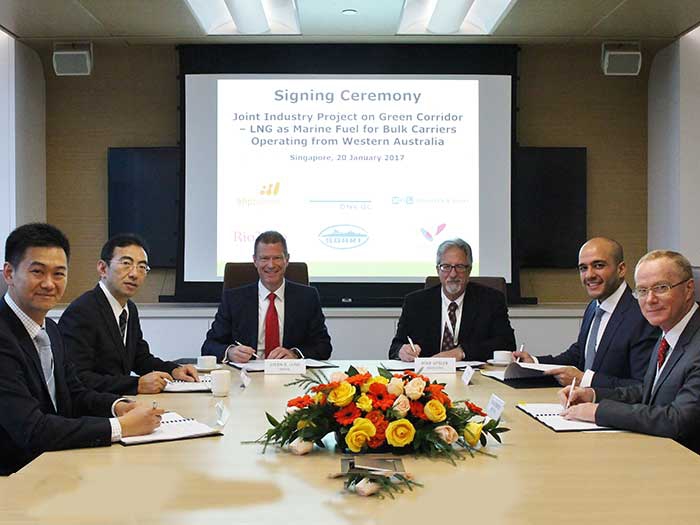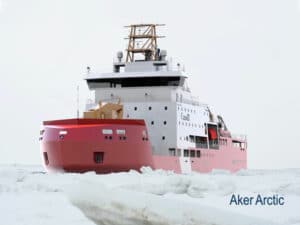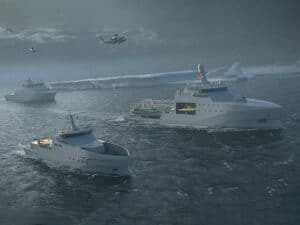
Green Corridor project eyes LNG fueled Capesize
Written by Nick Blenkey
L to R: Chen Gang, Technical Manager from SDARI, Toshiaki Tanaka, Executive Officer, Deputy Director General, Dry Bulk Business Unit from Mitsui O.S.K. Lines, Steen Lund, Regional Manager South East Asia, India and Pacific from DNV GL – Maritime, Mike Utsler, Chief Operating Officer from Woodside Energy, Abdes Karimi, Freight Operations Manager from BHP Billiton, and David O'Brien, Freight Manager, Rio Tinto Marine
JANUARY 25, 2017 — A joint industry project (JIP) is to look at the commercial potential of LNG fueled vessels in a “green corridor” between Australian and China and to create a next generation Capesize design that will undergo Approval in Principle (AiP) under new DNV GL rules.
The JIP agreement was signed recently in Singapore by BHP Billiton, Mitsui O.S.K. Lines, Rio Tinto, China State Shipbuilding Corporation design consultancy SDARI, Woodside, and DNV GL
“As we approach the entry into force date for sulphur emissions, we are seeing interest in LNG as a ship fuel start to climb again,” says Morten Lovstad, DNV GL – Maritime Business Director Bulk Carriers. “As one of the largest LNG exporters in the world and with bunkering infrastructure coming online, Australia is well placed to support the bulk trade on the west coast with LNG as fuel. By working together with some of the industry’s technology leaders we are confident this new project has the potential to deliver a competitive, compliant and safe vessel and the business case to back it up.”
“We recognize that LNG as a transport fuel option presents opportunities, both in a commercial sense and as a low-emissions alternative to other marine fuels,” said Woodside COO Mike Utsler. “This JIP, importantly, is bringing together mining companies, a shipowner and supplier, a ship designer and LNG producer and led by DNV GL to explore how we can develop the LNG fueled ‘Green Corridor.’ Woodside is this year taking delivery of the first LNG fuelled marine support vessel in the Southern Hemisphere and we look forward to the findings from this joint industry project on the potential for LNG fuel use by bulk carriers.”
The JIP will simultaneously pursue two main objectives – building and assessing the business case of LNG as fuel for Capesize bulkers operating in the trade between Australia-China, and developing an efficient LNG fueled Capesize concept design. These activities will be run together, with the immediate results generated from one project fed into the other.
The financial and technical feasibility study will look at a wide range of factors including the capital costs, operational costs and price sensitivities in terms of LNG and low sulfur marine fuel oils, in comparison to both a conventionally fueled vessel and a LNG retrofit, as well as undertaking a bunker supply chain assessment to identify issues affecting the vessel design and business case.





Leave a Reply
You must be logged in to post a comment.